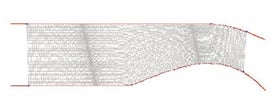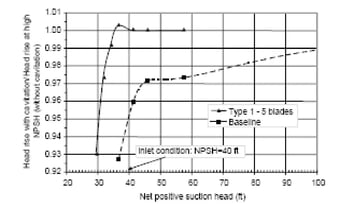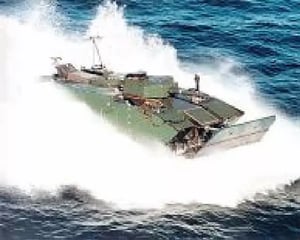- TURBOdesign Core
TURBOdesign Pumps & Fans
TURBOdesign Suite provides tools to designers to put them in direct control of aerodynamic design to streamline every step of the design process for turbomachinery components.
Our Pumps & Fans packages
- TURBOdesign Pro
TURBOdesign Compressors & Turbines
TURBOdesign Suite provides tools to designers to put them in direct control of aerodynamic design to streamline every step of the design process for turbomachinery components.
Our Compressors and Turbines packages...
- TURBOdesign Optima
TURBOdesign Optima
TURBOdesign Suite provides tools to designers to put them in direct control of aerodynamic design to streamline every step of the design process for turbomachinery components.
TURBOdesign Optima is our automatic optimization package
- Toolkit: 3D Blade Design
3D Blade Design
Our turbomachinery design toolkits include one on 3D blade design...
- Toolkit: Meanline Design
Meanline Design
TURBOdesign Suite provides tools to designers to put them in direct control of aerodynamic design to streamline every step of the design process for turbomachinery components.
Lorem ipsum dolor sit amet, consectetur adipiscing elit. Suspendisse varius enim in eros elementum tristique.
Lorem ipsum dolor sit amet, consectetur adipiscing elit. Suspendisse varius enim in eros elementum tristique. Duis cursus, mi quis viverra ornare, eros dolor interdum nulla, ut commodo diam libero vitae erat. Aenean faucibus nibh et justo cursus id rutrum lorem imperdiet. Nunc ut sem vitae risus tristique posuere.
- Toolkit: Volute / Scroll Geometries
Volute/Scroll Geometries
TURBOdesign Suite provides tools to designers to put them in direct control of aerodynamic design to streamline every step of the design process for turbomachinery components.
Lorem ipsum dolor sit amet, consectetur adipiscing elit. Suspendisse varius enim in eros elementum tristique. Duis cursus, mi quis viverra ornare, eros dolor interdum nulla, ut commodo diam libero vitae erat. Aenean faucibus nibh et justo cursus id rutrum lorem imperdiet. Nunc ut sem vitae risus tristique posuere.
- Toolkit: Multi-Point Optimization
Multi-Objective Optimization
TURBOdesign Suite provides tools to designers to put them in direct control of aerodynamic design to streamline every step of the design process for turbomachinery components.
Lorem ipsum dolor sit amet, consectetur adipiscing elit. Suspendisse varius enim in eros elementum tristique. Duis cursus, mi quis viverra ornare, eros dolor interdum nulla, ut commodo diam libero vitae erat. Aenean faucibus nibh et justo cursus id rutrum lorem imperdiet. Nunc ut sem vitae risus tristique posuere.
- Compressors and Turbines
Compressors
Test
- Fans and Blowers
Fans and Blowers
Test
- Pumps and Hydraulic Turbines
Pumps and Hydraulic Turbines
Test
- Transonic Compressors, Fans and Turbines
High Speed Turbines
Test
- Academia
Academia
Test
- Engineering Services
Design Consultancy
Test
- R & D
Research and Development
Test
- Training
Training
- Blog
Blog
Catch up with the very latest and useful articles
- Case Studies
Case Studies
Read our success stories from companies of all sizes who are transforming the way they design turbomachinery components.
- Consultancy Summaries
Consultancy Summaries
Read our success stories from companies of all sizes who are transforming the way they design turbomachinery components.
- Publications
Publication
Browse the latest and previous editions of our publications library
- Webinars
On-Demand Webinar Library
Playback our webinars
- White Papers
White Paper
Browse our white paper library.



 In order to achieve these challenging objectives for the EFV waterjet, the 3D Inverse Design code, TURBOdesign1, was used to generate blade design geometries that met the pump specifications. Both rotor and stator blades were devised. Suitable blade geometries from TURBOdesign1 were then evaluated with a 3D Navier-Stokes CFD code to determine their performance and cavitation limits. This step indicated any needed refinements to meet the waterjet requirements. These tools were first directed at the evaluation of three options: a single rotating blade row plus a stator; a rotating blade set consisting of main blades and splitter blades, plus a stator; and two co-rotating blade rows (an inducer and a kicker) plus a stator. In the second step of the design process, the single rotor/stator concept was optimised to maximize the efficiency while matching a given design point. The resulting design is predicted to have much improved cavitation performance compared with a design accomplished with conventional design methods.
In order to achieve these challenging objectives for the EFV waterjet, the 3D Inverse Design code, TURBOdesign1, was used to generate blade design geometries that met the pump specifications. Both rotor and stator blades were devised. Suitable blade geometries from TURBOdesign1 were then evaluated with a 3D Navier-Stokes CFD code to determine their performance and cavitation limits. This step indicated any needed refinements to meet the waterjet requirements. These tools were first directed at the evaluation of three options: a single rotating blade row plus a stator; a rotating blade set consisting of main blades and splitter blades, plus a stator; and two co-rotating blade rows (an inducer and a kicker) plus a stator. In the second step of the design process, the single rotor/stator concept was optimised to maximize the efficiency while matching a given design point. The resulting design is predicted to have much improved cavitation performance compared with a design accomplished with conventional design methods. Rotors for waterjets have previously been designed with the assumption of free-vortex radial blade loading. This loading distribution simplifies the design process, because it means equal energy input to the flow at each radius and a uniform axial velocity in the exit flow of a blade row. However, it results in rather long axial blade lengths for the hub sections. In order to reduce weight and volume, and increase hydraulic efficiency and therefore thrust, it was desirable that a non-uniform radial blade loading be used for the new design. By using TURBOdesign1 it was possible to easily specify non-free vortex work distributions, as the code can directly compute a blade geometry, which would satisfy the specified mass flow rates and work distributions.
Rotors for waterjets have previously been designed with the assumption of free-vortex radial blade loading. This loading distribution simplifies the design process, because it means equal energy input to the flow at each radius and a uniform axial velocity in the exit flow of a blade row. However, it results in rather long axial blade lengths for the hub sections. In order to reduce weight and volume, and increase hydraulic efficiency and therefore thrust, it was desirable that a non-uniform radial blade loading be used for the new design. By using TURBOdesign1 it was possible to easily specify non-free vortex work distributions, as the code can directly compute a blade geometry, which would satisfy the specified mass flow rates and work distributions.


